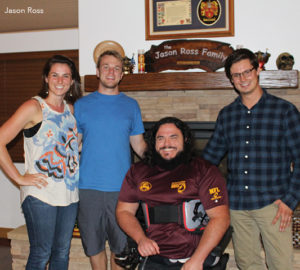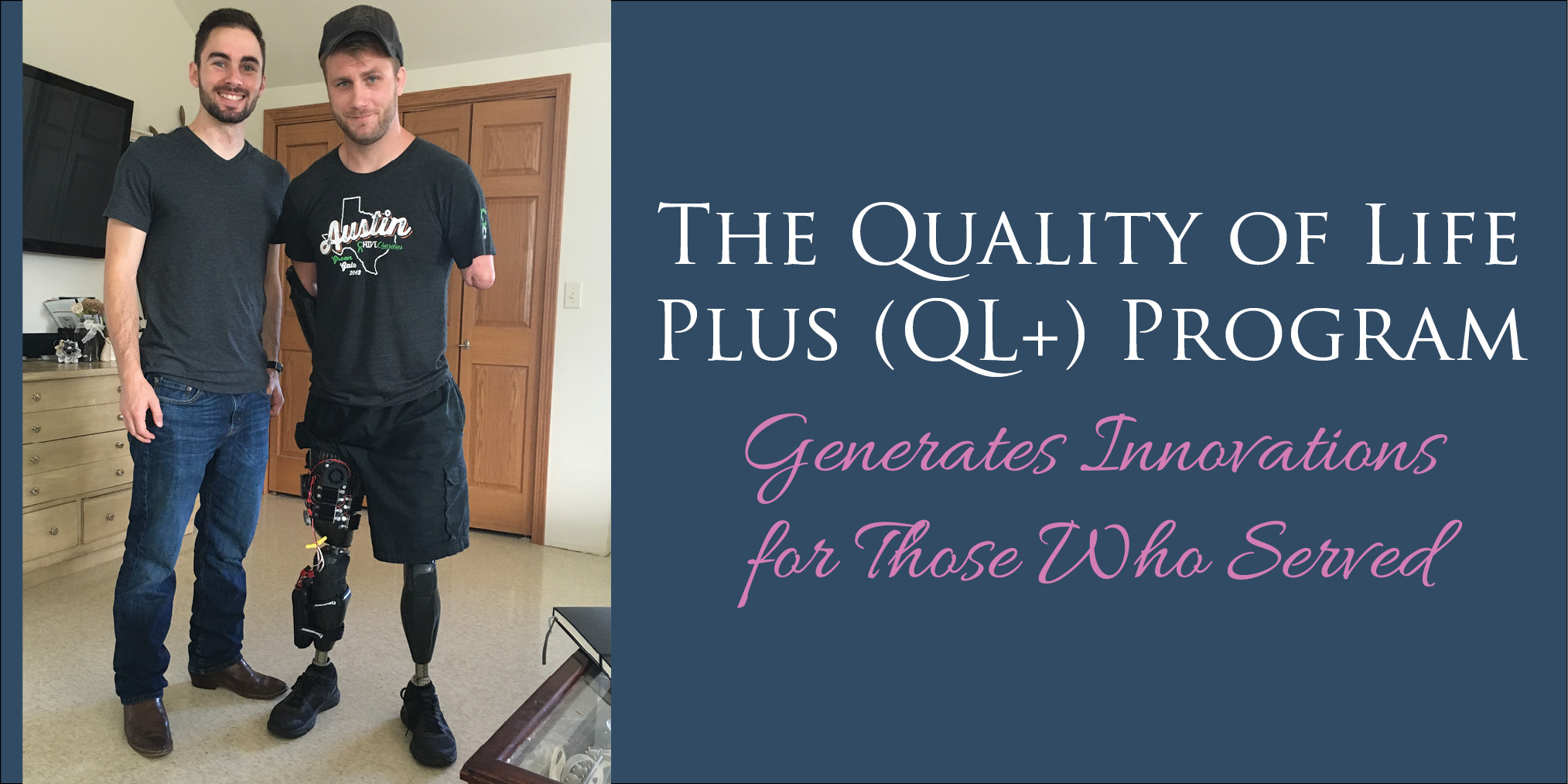The Quality of Life Plus (QL+) Program, a 501 (c)(3) is a not-for-profit organization headquartered in McLean, Virginia. The mission of QL+ is to provide the funding and the resources to foster and generate innovations that aid and improve the quality of life of the men and women who, while serving their country, were injured in the line of duty. QL+ has two principal focuses: identifying the challenges of military veterans and first responders who have sacrificed for the common good; and working with teams of university students and faculty to solve these challenges as part of their educational experience. Since our establishment, more than 295 students and a dozen faculty have participated in over 75 QL+ Projects.
The laboratory located at Cal Poly in San Luis Obispo, California is the facility for research and development of these QL+ sponsored innovations. The Program provides solutions to challenges that will improve the quality of life in ways that will enhance an individual’s ability to work, live and play. Solving these challenges provide a key educational benefit to the students who participate. Team-based problem solving promotes project-based learning. Further, it provides research opportunities for faculty members. By leveraging the creativity of engineering students and faculty, assistive technologies are developed to serve smaller populations or specialized needs and are focused on solutions rather than commercial viability. The students have a very high level of interest in our Program and are eager to be a part of a QL+ innovation team.
We would like to share the results of two recent senior projects.
 One challenge was posed by wounded Marine explosive ordinance device specialist Jason Ross to relieve pressure from open wounds under his pelvis so he can spend more time in his chair and enhance the healing process. A team of four senior engineering students created a method to lift Jason in his chair using an adjustable ratcheting suspension system on his current wheelchair. The chair was delivered on the 27th of August and tested by Jason. The photo (at right) illustrates Jason’s reaction to his new chair.
One challenge was posed by wounded Marine explosive ordinance device specialist Jason Ross to relieve pressure from open wounds under his pelvis so he can spend more time in his chair and enhance the healing process. A team of four senior engineering students created a method to lift Jason in his chair using an adjustable ratcheting suspension system on his current wheelchair. The chair was delivered on the 27th of August and tested by Jason. The photo (at right) illustrates Jason’s reaction to his new chair.
Another challenge was requested by Navy veteran Taylor Morris, a retired explosive ordinance device technician who lost all four limbs after he stepped on an improvised explosive device in Afghanistan. One of the challenges amputees face when wearing their prostheses is the elevated residual limb skin temperature and perspiration that is created when the sockets trap body heat. A team of four senior engineering students designed and developed a successful transfemoral prosthetic socket cooling system for Taylor. This cooling system helps Taylor dissipate heat from his socket using an embedded Peltier network to cool and regulate socket temperature that allows him to maintain more normal skin and body temperature.
This year, senior engineering students are designing and building four innovations.
- Yeager Multifunctional Tool: a multi-functional hand tool for people who have severely limited use of their hands or wrists. The end goal is an ergonomically designed tool that will allow those with limitations, such as burns or amputations, to use a variety of interchangeable hand tools, leading to more independence and an improved quality of life.
- Prosthetic Leg Modification: an adjustable below the knee prosthetic leg to provide an active duty Navy SEAL and other amputees with a means of meeting their mission safely and effectively. They currently must carry additional prosthetic legs during deployments and request a multifunctional prosthetic. The end goal is a prosthetic leg that combines the functions of walking, running, and swimming into a durable, lightweight, waterproof, and comfortable below the knee prosthetic that will not slip off.
- Self-Powered Ankle Prosthetic: a durable self-powered prosthetic ankle that provides ankle biomechanics similar to an active prosthetic while retaining the simple design of a passive prosthetic. The proposed design will have no external power and will attach to a below the knee prosthetic for amputees who want to live an active life. The end goal is an ankle that better mimics the musculature of a normal ankle and restores 80% of the range of motion. This will improve quality of life by allowing gait on uneven terrain in various environments with minimum energy input.
- Phase 2 Prosthetic Socket Cooling System: a system that will dissipate the heat created inside the socket of a leg prosthetic. The goal is to allow amputees to perform physical activity without creating excessive sweat inside their sockets. Losing a limb reduces the body’s ability to prevent overheating and will cause increased perspiration, especially during activity. Although this challenge was presented by Taylor, a Navy explosive ordinance disposal technician who lost all four limbs, this product will also serve as a practical solution for any active amputee.
The QL+ Program is our way of helping these national heroes who have given so much for their country. Please consider a tax-deductible contribution to QL+. You can directly improve the quality of life for Veterans whose service has resulted in paralysis, loss of limbs and other life-altering injuries.
You can learn more about Taylor Morris at www.qlplus.org. Donations are appreciated.






